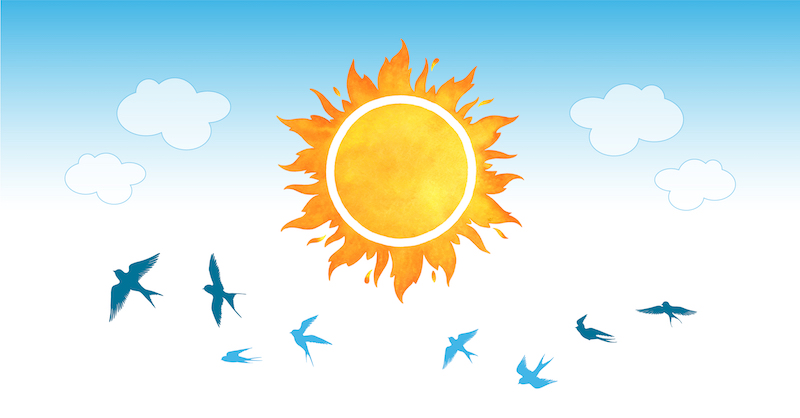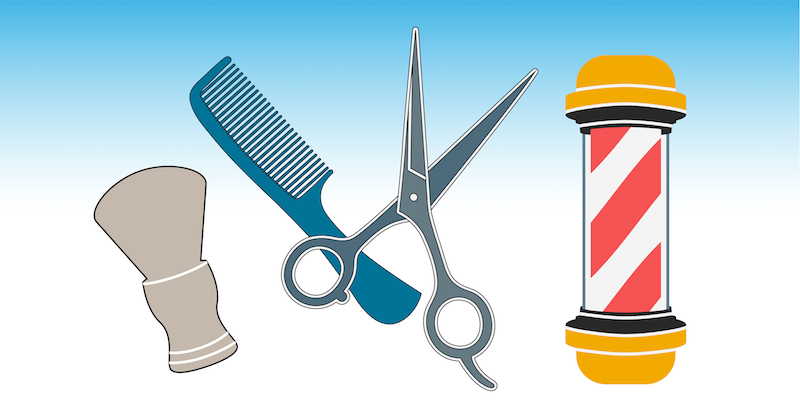Keep summer activities as safe as possible

As we move into a summer with COVID-19, many people are slowly venturing beyond their homes as businesses, beaches, and restaurants begin to open. But amidst the reopening, there are many questions about what types of behaviors are safe, and what might put you or your family at risk.
While it’s important to remember that nothing you do outside of your home is completely risk-free, we asked infectious disease specialist Dr. Rick Malley to answer some common questions about how to stay as safe as possible as you begin to engage in summer activities.
If I am considered low risk for serious illness from COVID-19, do I really need to be concerned about the virus?
Yes, avoiding infection should be a concern for everyone. While it’s true that certain people are at higher risk of becoming seriously ill or dying from COVID-19, such as those over age 65 or with underlying medical conditions, we are also seeing younger, healthy people becoming very sick. And some kids are developing multi-system inflammatory syndrome in children (MIS-C), a rare but serious illness that can affect the whole body. Finally, a healthy young person who gets the virus can also spread to others who may be at high risk of complications. This means it’s important for everyone to take steps to reduce their risk.

Now that restaurants are open again in many states, what are my safest options for dining out?
To reduce your risk when heading out to your favorite restaurant, remember these safety measures:
- Only dine with members of your social bubble. (The people you live with or have mutually chosen to exclusively see during the outbreak.) Eating and drinking with other people, even outdoors, can pose a higher risk.
- Outdoor seating, if available, is preferable to indoor seating.
- Ideally, make sure you are seated at least 6 feet away from other diners, rather than just having tables 6 feet apart from one another.
- All of the servers should be wearing masks.
- Strongly consider making a reservation, so you don’t have to wait.
- Don’t linger in the restaurant for hours after your meal. Prolonged time in a shared space, especially indoors, can increase your risk.
- For an even higher level of safety, consider ordering takeout and dining at home.

How can I stay safe at a pool party or public beach?
Attending a pool party with a group of close friends or family who are all part of the same family or social bubble is likely to be relatively safe. But if you will be attending a party with people outside of this group or going to public beach, you should take more precautions to stay safe:
- Stay at least 6 feet away from others not in your group.
- Wear a mask except when in the water.

Is it safe for us to play backyard games with other people?
You can reduce your risk by following basic physical distancing rules. For example, you could play an outdoor game of volleyball or badminton by having your family or social bubble go up against a team from another social bubble, and keeping at least 6 feet from the other team members. Or you could play a game of catch or other ball game with a group of people who are all at least 6 feet apart. Although there’s no proof that the coronavirus can be easily transmitted via a ball or other objects, don’t touch your face until you’ve washed or sanitized your hands.

What’s the safest way to travel this summer?
As with other activities, the safety level of different types of transportation can vary widely, depending on the individual circumstances. Walking, bicycling, or driving your own car are the safest options for getting from one place to another. But if you’re at least 6 feet away from other people on a plane, bus, or train, and you’re all wearing masks, the risk may also be small.

Is it safe to go to a hotel, go camping, or rent a vacation home?
All of these options can be safe, as long as you follow basic safety guidelines, such as avoiding large gatherings of people and wearing masks and staying at least 6 feet apart from others when you’re in public spaces, such as lobbies, beaches, and pools.

Can I get a haircut?
Getting a haircut is relatively safe as long as both you and the hair stylist wear masks and the salon follows other physical distancing measures. We’re seeing more and more evidence that wearing masks is an effective way to reduce the risk of infection, though it doesn’t completely eliminate the risk. Another way to reduce your risk is to keep your time inside the salon to a minimum by waiting outside or in your car until the stylist is ready for you.

My son wants to invite his two best friends to a sleepover birthday party. Is this safe?
While it might be tempting to have a few close friends over, especially if you know them well, it does carry some risk. Many children who have COVID-19 show no signs of infection, but can still spread the virus. A safer option might be to have a small birthday party in your backyard or local park. Just make sure the kids wear masks as much as possible and especially when fewer than 6 feet apart.
Why do the guidelines about what’s safe to do keep changing?
As we learn more about coronavirus and COVID-19, we are gathering more information about which activities and situations pose more risk than others. In some cases, this means making adjustments to our recommendations based on that knowledge. While any activity outside of your home comes with some risk, you can help reduce that risk by following the current safety guidelines from the Centers for Disease Control and Prevention (CDC).
Get more answers about Boston Children’s response to COVID-19.
Related Posts :
-

Helping clinicians embrace family-centered rounds
If you’ve ever been hospitalized, you may have experienced this: groups of doctors coming in and talking about you ...
-

An off-the-shelf tamponade kit provides surgeons with ‘the luxury of time’ during a life-threatening emergency
It was a late Friday afternoon in April when the call came: A young boy was being transferred to Boston ...
-

Why parents really need to talk to their children about the news
These are strange, anxiety-provoking times. That’s true no matter where one lives or where one sits on the political ...
-

Biko’s legacy: Mom honors her son through water safety awareness
Biko Mangcu was “a big bright light,” says his mother, Sipho. Everyone in his Cambridge, Massachusetts, neighborhood knew him. His ...





